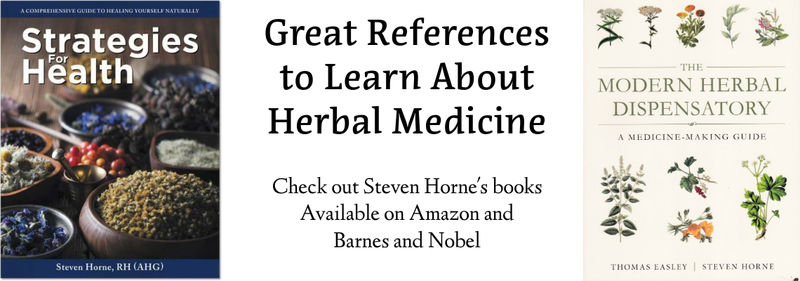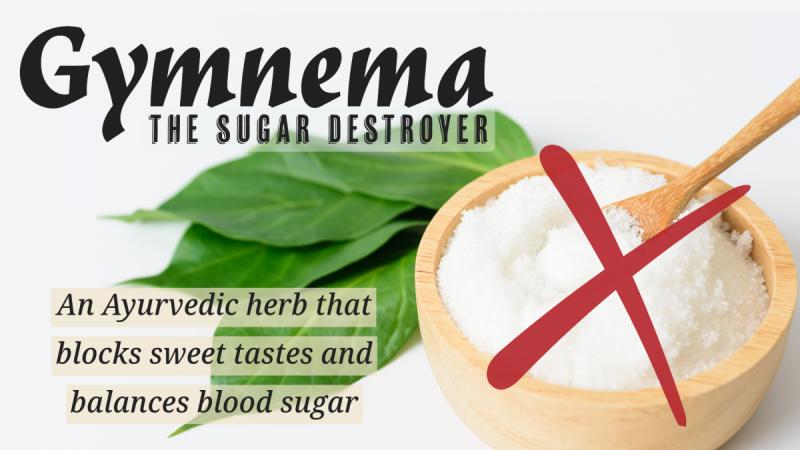 One of the best ways to understand herbs is to taste and smell them, and then try them in liquid form. You can gain a greater understanding of herbs by doing this than you would ever obtain by just reading about them in books and swallowing them in capsules. I would especially try this with Gymnema sylvestre, or just gymnema.
One of the best ways to understand herbs is to taste and smell them, and then try them in liquid form. You can gain a greater understanding of herbs by doing this than you would ever obtain by just reading about them in books and swallowing them in capsules. I would especially try this with Gymnema sylvestre, or just gymnema.
Gymnema contains compounds that bind to and block the receptor sites for the sweet taste. So, if you chew up some of the gymnema leaf or put an extract or tea in your mouth you won’t be able to taste anything sweet for awhile.
The Sugar Destroyer
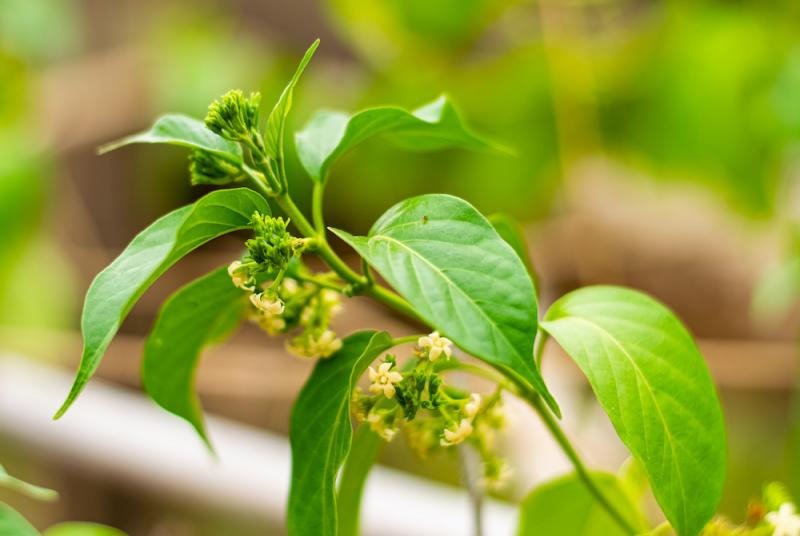 Some years back when I was working an a liquid herbal formula with gymnema, I had a bunch of volunteers who tasted the formula and gave me feedback on the flavor. I needed several volunteers because once one tasted it, they couldn’t accurately judge the flavor because because the gymnema temporarily prevented their ability to detect the sweetness in it. After we finished working on the formula, we had some fun trying a variety of sweets. Sugar feels like putting sand in your mouth; basically has no taste at all. Chocolate bars taste bitter and muddy. Sweet tarts are incredibly sour.
Some years back when I was working an a liquid herbal formula with gymnema, I had a bunch of volunteers who tasted the formula and gave me feedback on the flavor. I needed several volunteers because once one tasted it, they couldn’t accurately judge the flavor because because the gymnema temporarily prevented their ability to detect the sweetness in it. After we finished working on the formula, we had some fun trying a variety of sweets. Sugar feels like putting sand in your mouth; basically has no taste at all. Chocolate bars taste bitter and muddy. Sweet tarts are incredibly sour.
All this explains why one of the Hindu names for this Ayurvedic remedy is gurmar, which means “sugar destroyer.” Gymnema comes to us from India where it has long been used to treat diabetes. Diabetes was diagnosed in India thousands of years ago by detecting sugar in the urine. Sweet-smelling urine was presented to ants. If they were attracted to the urine, it meant it had a high level of sugar, something we now recognize as a major symptom of diabetes.
Gymnema’s Hypoglycemic Effects
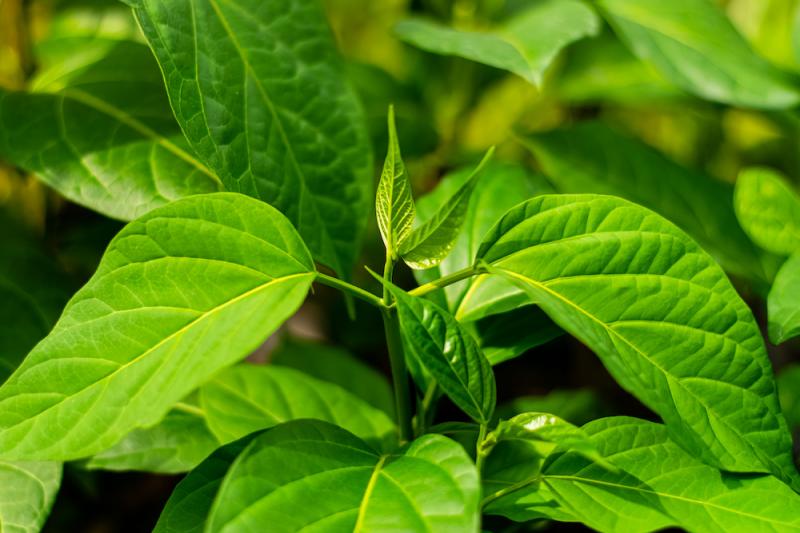 Research in the early part of the last century showed that gymnema affects enzymes involved to sugar metabolism to improve the uptake of glucose into the cells. It also prevents epinephrine (adrenaline) from stimulating the liver to release glucose into the blood. This helps to lower blood sugar levels, but it doesn’t result in hypoglycemia by driving the blood sugar level too low, the way some diabetic medications do. In other words, gymnema helps stabilize blood sugar levels.
Research in the early part of the last century showed that gymnema affects enzymes involved to sugar metabolism to improve the uptake of glucose into the cells. It also prevents epinephrine (adrenaline) from stimulating the liver to release glucose into the blood. This helps to lower blood sugar levels, but it doesn’t result in hypoglycemia by driving the blood sugar level too low, the way some diabetic medications do. In other words, gymnema helps stabilize blood sugar levels.
If you’re a sugar addict and you have metabolic syndrome or type 2 diabetes, I’d highly recommend taking gymnema in some liquid form. It will not only help lower your blood sugar levels, it will inhibit the taste of sweet foods, so you won’t be tempted to eat them. This is exactly what we were trying to do when we were creating the formula mentioned above. We were combining gymnema with licorice and other herbs that helped reduce sugar cravings to create a formula to help people wean themselves off of refined sugar.
Gymnema for Type 1 Diabetes
More recent research suggests that higher doses of the herb may help reverse beta cell damage, regenerating the ability of the pancreas to produce insulin. This means it can be helpful to use with type 1 diabetes. Because of the damage to the beta cells of the pancreas, type 1 diabetes is considered incurable, but this does not mean it cannot be helped with herbs.
By using herbs like gymnema and adopting a diet of vegetables with low amounts of sugars and starches, along with some good fats and proteins, the amount of insulin needed to control type 1 diabetes can be drastically lowered. This reduces the side effects caused by high insulin levels and can lead to a healthier life. I also believe this could result in a cure, especially if the program is started immediately following the diagnosis. I know of at least one case where this actually happened, and I know of other cases where the amount of insulin was reduced by 50-75%.
Other Benefits of Gymnema
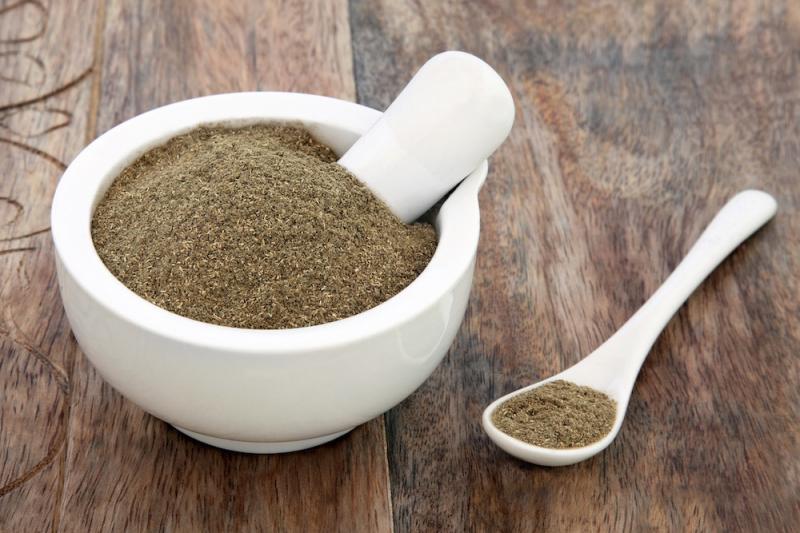 Gymnema helps decrease appetite and also helps a person lose weight by increasing levels of a hormone called leptin in the blood. Leptin shuts off appetite causing us to eat less. Gymnema also improves serotonin levels. Low levels of serotonin can lead to the desire to binge on carbohydrates as this helps increase serotonin levels. Gymnema has also historically been used for constipation, water retention, stomach troubles, and liver disease. It was also applied topically for snake bites.
Gymnema helps decrease appetite and also helps a person lose weight by increasing levels of a hormone called leptin in the blood. Leptin shuts off appetite causing us to eat less. Gymnema also improves serotonin levels. Low levels of serotonin can lead to the desire to binge on carbohydrates as this helps increase serotonin levels. Gymnema has also historically been used for constipation, water retention, stomach troubles, and liver disease. It was also applied topically for snake bites.
A good dose of gymnema is 300 milligrams three times a day or about one capsule three times a day. A tincture or glycerite can also be used. Take 60 to 100 drops two or three times daily. Take smaller doses (30 drops) more often to reduce cravings for sweets and control appetite. You can also make a tea by pouring one cup of boiling water over one teaspoon of the leaves. Steep for five minutes and drink one cup two or three times daily.
Downloads
Steven's Articles
October
-

-
Understanding Caffeine & Cellular Adaptation
Preserving the power of caffeine's buzz and the…
September
-

-
Horseradish
A pungent spice for aiding protein metabolism…
-

-
Banaba or Crepe Myrtle
A beautiful tree from Southeast Asia whose leaves…
August
-

-
Monkeyflowers
Flower essences to help see ourselves more clearly…
-

-
Mariposa Lilies
Strengthening the bond between mother and child…
-

-
The Noble Bay Leaf
A common kitchen herb for aiding digestion and…
-

-
Epimedium: Horny Goat Weed
A circulatory stimulant and kidney yang tonic…
July
-

-
The Medicinal and Nutritional Benefits of Apricots
A nutritious fruit and valuable medicinal seed for coughs
-

-
Dogwoods
Asian dogwood is used to stop excessive discharge,…
June
-

-
Neem: The Village Pharmacy
A popular Ayurvedic remedy for dental and immune…
-

-
Spilanthes: The Toothache Plant
A traditional remedy for teeth and gums, as well…
-

-
Forsythia
An anti-inflammatory, fever-reducing, and infection fighting herb
May
-

-
Buckwheat (Kashi)
A delicious, high protein, gluten-free, gut-healthy food
-

-
Leaky Gut Syndrome
Plugging the leaks on the underlying cause of…
-

-
Storksbill
An edible, medicinal, weedy herb, helpful for…

